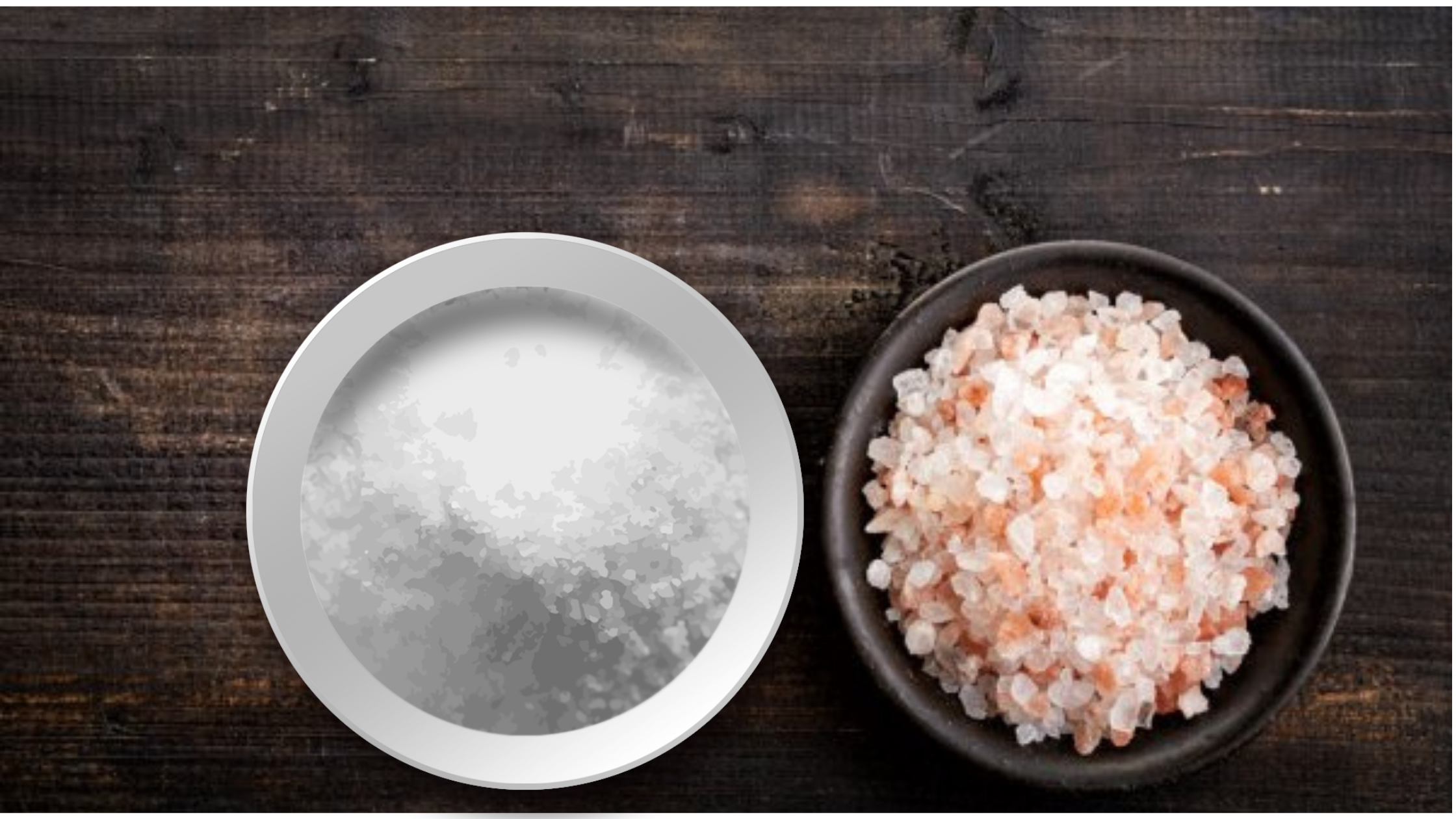Salt is a basic ingredient in the Kitchen. It enhances the taste of food. Salt is basically Sodium Chloride (NaCl). Common salt is readily available in the market which has added Iodine. Salt has many benefits but we usually know it for its taste-enhancing abilities only. In this article, we are going to talk about the difference between Common salt and Pink salt or Rock salt. Which salt is healthier? what is the composition of each salt? How common salt is manufactured? From where we extract the rock salt or pink salt and much more useful information. To begin, let’s understand the role of salt.
Why do we need salt?
As we know salt consists of sodium and chloride. Sodium plays an important role in body functioning. But one should not consume it in excess, as it may have adverse effects. The human body requires Sodium in a less quantity to conduct nerve impulses to the brain, muscle contraction, and relaxation, maintaining the right fluid balances in the body, prevents low blood pressure, and also reduces infections and bacterias.
What is Common salt or White salt(Iodized salt)?
Common salt or Iodised salt is the one that we use at home daily. It is obtained from seawater. After obtaining raw salt from the ocean, it is then highly processed and refined. Due to which all nutrients are stripped off from the end product. In the end, Iodine is added to the salt externally along with harmful anti-caking agents. An anti-caking agent is responsible for the free flow of the product and prevents the particles from sticking resulting in lumps.
What is Pink salt or Himalayan Rocksalt?
Pink salt or Himalayan rock salt is a type of salt that is natural and involves less or zero processing, unlike common salt. It derives its name ‘Pink Salt‘ from its appearance. It is also called as ‘Sendha Namak‘ in India. It is found in the Sindh province of Pakistan region near the Himalayas and is mined and extracted by hands. It is believed to have been formed millions of years ago. Since it is harvested naturally, it possesses natural minerals and trace elements that are not present in common salt.
Which salt is better – Common salt or Himalayan Rocksalt?
Now, we know pink salt or Himalayan rock salt is extracted naturally and undergoes little or no processing. on the other hand, white salt or common salt is manufactured after high processing and refining which alters the natural structure of NaCl, making Pink or Rock salt a healthier option.
Rock salt contains approx 85 – 87% naturally occurring sodium. Whereas, Common salt contains 90 – 97% sodium chloride along with artificially added Iodine. Rock salt contains around 84 other naturally available minerals along with Iodine.
If we talk about absorption, Common salt is not absorbed completely by our body because of artificial additives. It accumulates in the body slowly. Whereas, Pink salt being naturally gets absorbed completely in the body.
Substances present in white salt as additives are very harmful to the body. It imbalances the blood pressure, may lead to hormonal imbalance, traces of aluminum can affect the fertility in man, may have an ill effect on bones and joints, increases the risk of stones in kidney and gallbladder, etc.
Naturally occurring minerals in pink salt have a good effect on the body. It helps in regulating blood pressure, supports vascular and respiratory functions, helps in maintaining the PH level of the body, boosts energy and electrolytes, promotes blood sugar, helps in better absorption of nutrients from food, prevents muscle cramps, promotes bone strength, enhances immunity and metabolism, extracts excessive acidity, supports thyroid functions, soothes a sore throat, etc.
Benefits of Rocksalt :
Although I have already mentioned a few of the benefits above. Still, there are a lot more:
- Improves digestion.
- Treats Sinus.
- Promotes weight loss.
- Reduces sugar cravings but reactivating Insulin.
- Promotes sleep.
- Reduces stress.
- Purifies the air.
- Promotes healthy skin.
- Reduces Edema (water retention).
- Exfoliates skin.
- Used as a bath salt or body scrub.
- Promotes healthy hair.
- Treats bleeding gums.
Conclusion:
Both salts have their own significance. Common salt is useful for people having less Iodine in the body. But, what about the people who have Iodine in the proper amount? Excess Iodine is also harmful to the body as per the saying “Excess of everything is bad“. Iodine in white salt is artificial but for rock salt, it is natural and natural minerals don’t affect the body in the wrong way. Also, if you are a gym-going person and working on your abs and cuttings, you should opt for Rocksalt as it reduces water retention making your abs and cuts more visible.
Himalayan Rocksalt is costlier than white salt but one should not compromise when it comes to health. 1kg Rock salt costs around 100 rupees. Whereas, 1kg White salt costs around 27 rupees. I personally feel, spending 100 rupees is better than spending 1000 rupees on medicines.
Stay tuned for more articles!!!

Interesting
Quite informative
Good info
Nice topic with healthy knowedge tips
Interesting
Your style of writing makes Informative articles interesting too!